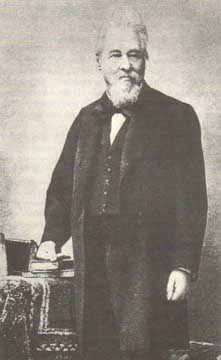 by Preston MacDougall September 09, 2005
In the aftermath of Katrina, with New Orleans looking more like a concrete bayou than the City of Dreams that was evoked by Tennessee Williams, it is too easy to lament about the "train-wreck" they call The City of New Orleans. It takes some imagination, and unshakeable confidence in the indomitable spirit of Americans, but I prefer to dream about the new Big Easy - rebuild it and we will come.
After a tour of the affected areas, President Bush both envisioned such rebuilding and referred to his previous visits to the great city of New Orleans. He stressed how much he had enjoyed himself, jesting "occasionally too much." It wasn't perfectly clear what he meant by that, it depends on what the meaning of "heh, heh" is. No one person is to blame for the current calamity. The hurricane itself was a natural disaster. But the failure of the levees to hold back the storm surge is subject to an engineering evaluation. As is the speed with which deluged survivors were rescued. But I'm not an engineer. I'm not even among the sons of engineers. This is a chemist's bittersweet love letter to a city that he had dreamed of visiting for the first time this fall - with bookings at a twice-storied charismatic place on Governor Nicholls Street, to be precise. The present state of New Orleans reminds me of the recrystallization of sugar - cane sugar in particular. Chemically speaking, there are many kinds of sugars. Fructose is better known as fruit sugar. Diabetics know that glucose is also known as blood sugar. Dextrose, maltose, and lactose are some of the others that are found in nature. The sugar that is found in paper packets, however, is usually sucrose. Sucrose can be made in the laboratory, in one simple step that forms ethereal bridges between the nano-scale beaded rings called fructose and glucose molecules. But it can also be made in a sugarcane plant, without the help of chemical engineers. Chemical engineers do come in handy, though, if snow-white purity is desired. The process from cane syrup to Dixie Crystals is both time- and energy-consuming. Especially using the pre-industrial "Jamaica train" method. This involved, usually employing slave labor, tediously ladling sugarcane juice skimmed off the top of boiling kettles, each one purer than the last, until the liquid was pure enough that it would crystallize when cooled. The engineering breakthrough came from Norbert Rillieux in the 1840's, who was born in New Orleans but had left for Europe to learn and teach about the developing theory of thermodynamics. His invention of the "multiple-effect evaporator under vacuum" was easily sold to sugarcane plantation owners in the South, and he returned to his native city to promote his new technology. Although he was a "free person of color" (he had "mixed" parentage), and was both a respected and financially successful engineer, his freedoms became increasingly curtailed as civil war loomed. He returned to Paris before the calamity of his era came. A National Historic Chemical Landmark, in the form of a commemorative plaque, is located in New Orleans on the campus of Dillard University, a historically black university. At least it was before Katrina struck. I suppose it is possible that the raging wind and water have dismantled the building where it was mounted, much like warm water can dissolve rock hard crystals of sucrose. If so, then I have no doubt that when the sense of urgency cools down, chemists and chemical engineers across the country, and possibly beyond, will assemble the resources to rebuild, and reiterate our respect for a sweet genius. Likewise, after the pumps have undone the work of gravity, and evaporation finishes the job, I look forward to the day when the City of Dreams glistens with the newness of recrystallized traditions. As the birthplace of jazz, I also imagine that it will be an especially sweet homecoming when the saints come marching back in, and the sound of New Orleans jazz once again fills the French Quarter. "Oh, I want to be in that number!" Hopefully, and with better engineering, it will be for good this time.
Postscript: I find it interesting how history sometimes repeats itself. Not like instant replay on Monday Night Football, but more like solos during a standard jazz composition. The underlying melody is recognizably there, but the soloists add their own interpretations using the different voices of their instruments. While Katrina and Monica would seem to have little in common, aside from obsessive media coverage and convoluted acts of deception, it remains to be seen whether the Big Easy will be George Bush's blue dress.
|
||
